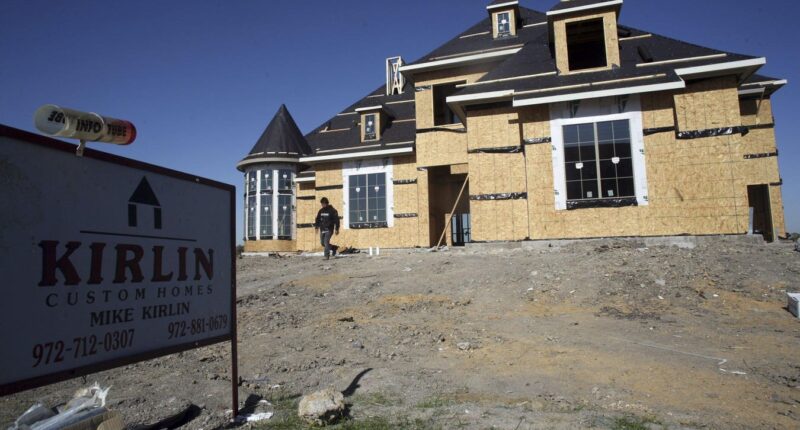Share this @internewscast.com
A new home being built just outside Dallas, Texas. Builders in the city have faced numerous problems … More
Getty Images
The city of Dallas purchased a building to act as a “one-stop shop” for its permitting agency. More than $29 million was spent on the purchase and upgrades. But just weeks after city staff moved in, they moved right back out because their new offices failed the permitting process.
After spending another year trying to get the building in compliance, the city gave up in April and announced that it would sell the property. Instead of opening up a physical single location to apply for permits, the city concentrated its efforts on a new online platform it rolled out in May.
All of this comes after years of embarrassing failures that have made it impossible for some builders to rely on the city’s approval of plans to actually build a home that follows all of the city’s rules.
Builders’ Permits Revoked
Danny Le knows those failures firsthand. He broke ground on a duplex in the city’s Elm Thicket neighborhood after the city approved his plans in 2023. Danny isn’t a big builder. He planned to live in one of the units and rent the other one out.
But the city issued a stop work order for his project and 18 others last summer when permitting staff discovered that it had accidentally approved projects that were not compliant with a recent change in the code. In 2022, as it turned out, the city had downzoned Elm Thicket, making it harder to add needed housing like duplexes. But nobody told Danny—probably because officials in the Dallas Planning Department didn’t even know themselves.
For months, Danny’s duplex sat open to the elements as he struggled to get the project back on track. He found attorneys to help him and worked to get a variance to the rules. Even after that, he had to deal with a lawsuit a resident filed against the city for granting him the variance. Danny persevered and today the open unit in his duplex is for sale.
Another builder ran into a similar problem but had to go to court to keep from having to tear down a home that was finished. Just like Danny, the city approved the plans and then later determined that it was too tall for the neighborhood by a few feet.
The builder fought all the way to the Texas Supreme Court, which ruled for him. During the six-year-long legal battle the home sat empty since the builder could not get an occupancy permit from the city.
Taxpayers have also had to foot the bill for the office’s mistakes. Earlier this year, the permitting department admitted that it had to forgo $8.6 million in fees because staff made an error in how much it was charging for remodeling permits.
It’s Not Just Hard to Build in Dallas
Dallas’s errors have been obvious and comical, but building homes isn’t necessarily easier in American cities where permitting offices don’t make glaring mistakes. The rules are complicated all over.
Zoning doesn’t operate like it does in the classic game Sim City, where the player simply chooses between commercial, industrial, or residential zones. Cities have all manner of sub-zones with requirements for minimum home size, required setbacks, and sometimes even purely aesthetic requirements.
For instance, Des Moines created a new zoning code in 2019 with different design requirements for different areas of the city. Last year, it was reported that builders had asked the city to relax some of those rules so that more low- to middle-income residents could afford homes. Developers also complained that the complexity of the rules had slowed the approval process.
When neighbors get involved, the process can become quite arbitrary. Outside Atlanta, Monica Crim purchased a property for what she called her “dream house.” The city approved her permits and the state environmental agency said the home would not negatively affect the environment. But a local homeowners’ association (which owns a private lake) convinced a zoning board that the application didn’t meet the stream buffer guidelines.
Excavating Through the Rulebook
The rules governing home construction have formed over decades like sedimentary rock. Government employees have to metaphorically dig through the layers each time they get an application. The thicker the rulebook, the more chance that they will make a mistake.
And the rule keepers rarely suffer from their mistakes. Instead, developers and home buyers bear the costs. The National Association of Home Builders estimates that regulations account for almost one-quarter of the cost of a new single family home.
New homes should be safe, for the occupants and neighbors. But many of the rules aren’t about safety anymore. One-stop online shops, like the one in Dallas, might be an improvement over having to drive paperwork to the bureaucrats, but the real problem is that the rules aren’t simple enough for even sophisticated developers to understand. Part of solving the housing crisis has to be making permitting more straightforward.














